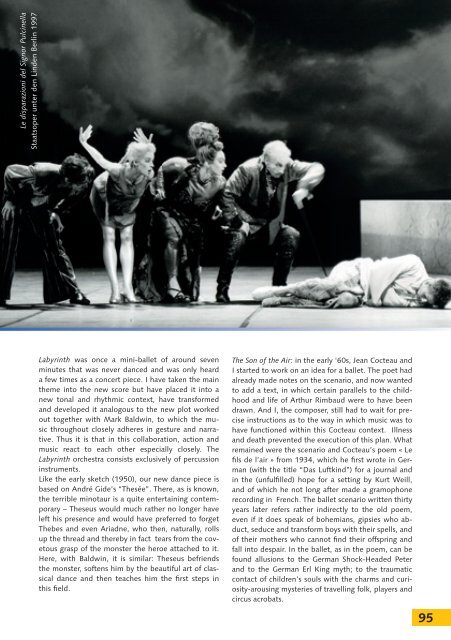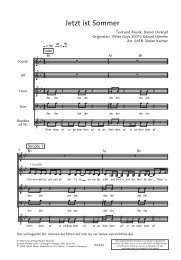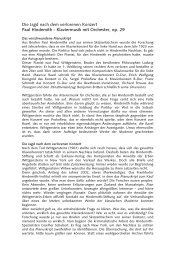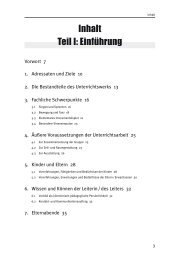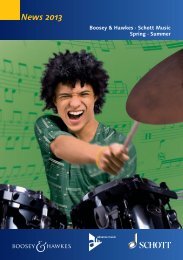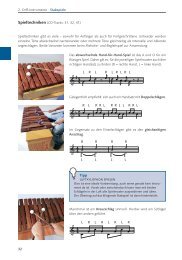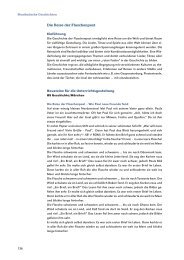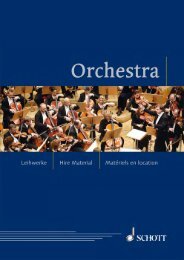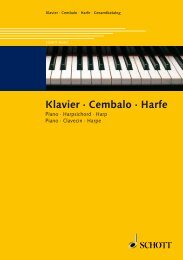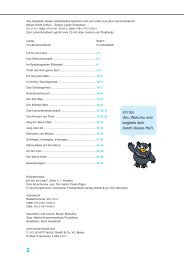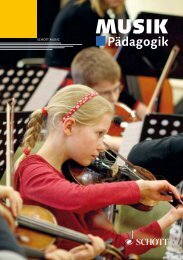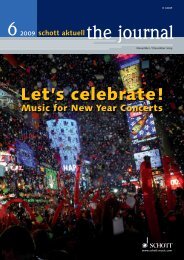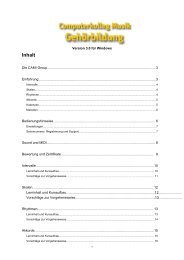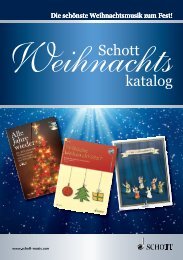HANS WERNER HENZE - Schott Music
HANS WERNER HENZE - Schott Music
HANS WERNER HENZE - Schott Music
Sie wollen auch ein ePaper? Erhöhen Sie die Reichweite Ihrer Titel.
YUMPU macht aus Druck-PDFs automatisch weboptimierte ePaper, die Google liebt.
Le disparazioni del Signor Pulcinella<br />
Staatsoper unter den Linden Berlin 1997<br />
Labyrinth was once a mini-ballet of around seven<br />
minutes that was never danced and was only heard<br />
a few times as a concert piece. I have taken the main<br />
theme into the new score but have placed it into a<br />
new tonal and rhythmic context, have transformed<br />
and developed it analogous to the new plot worked<br />
out together with Mark Baldwin, to which the music<br />
throughout closely adheres in gesture and narrative.<br />
Thus it is that in this collaboration, action and<br />
music react to each other especially closely. The<br />
Labyrinth orchestra consists exclusively of percussion<br />
instruments.<br />
Like the early sketch (1950), our new dance piece is<br />
based on André Gide’s “Thesée”. There, as is known,<br />
the terrible minotaur is a quite entertaining contemporary<br />
– Theseus would much rather no longer have<br />
left his presence and would have preferred to forget<br />
Thebes and even Ariadne, who then, naturally, rolls<br />
up the thread and thereby in fact tears from the covetous<br />
grasp of the monster the heroe attached to it.<br />
Here, with Baldwin, it is similar: Theseus befriends<br />
the monster, softens him by the beautiful art of classical<br />
dance and then teaches him the first steps in<br />
this field.<br />
The Son of the Air: in the early ‘60s, Jean Cocteau and<br />
I started to work on an idea for a ballet. The poet had<br />
already made notes on the scenario, and now wanted<br />
to add a text, in which certain parallels to the childhood<br />
and life of Arthur Rimbaud were to have been<br />
drawn. And I, the composer, still had to wait for precise<br />
instructions as to the way in which music was to<br />
have functioned within this Cocteau context. Illness<br />
and death prevented the execution of this plan. What<br />
remained were the scenario and Cocteau’s poem « Le<br />
fils de l’air » from 1934, which he first wrote in German<br />
(with the title “Das Luftkind”) for a journal and<br />
in the (unfulfilled) hope for a setting by Kurt Weill,<br />
and of which he not long after made a gramophone<br />
recording in French. The ballet scenario written thirty<br />
years later refers rather indirectly to the old poem,<br />
even if it does speak of bohemians, gipsies who abduct,<br />
seduce and transform boys with their spells, and<br />
of their mothers who cannot find their offspring and<br />
fall into despair. In the ballet, as in the poem, can be<br />
found allusions to the German Shock-Headed Peter<br />
and to the German Erl King myth; to the traumatic<br />
contact of children’s souls with the charms and curiosity-arousing<br />
mysteries of travelling folk, players and<br />
circus acrobats.<br />
95


